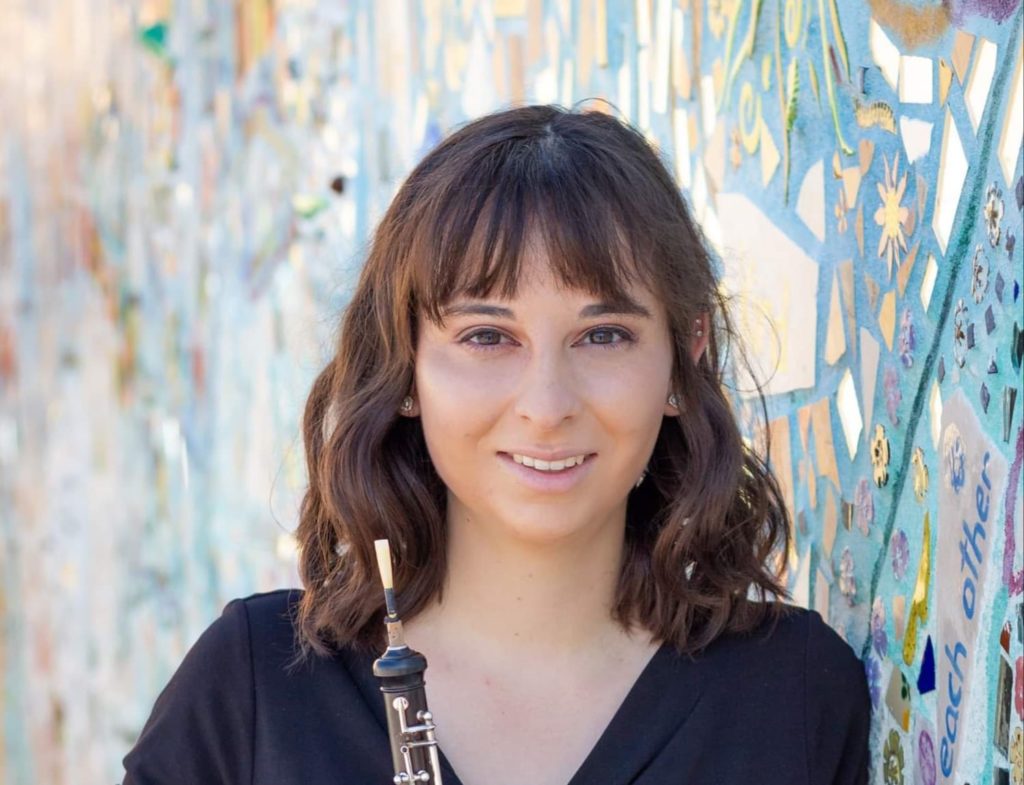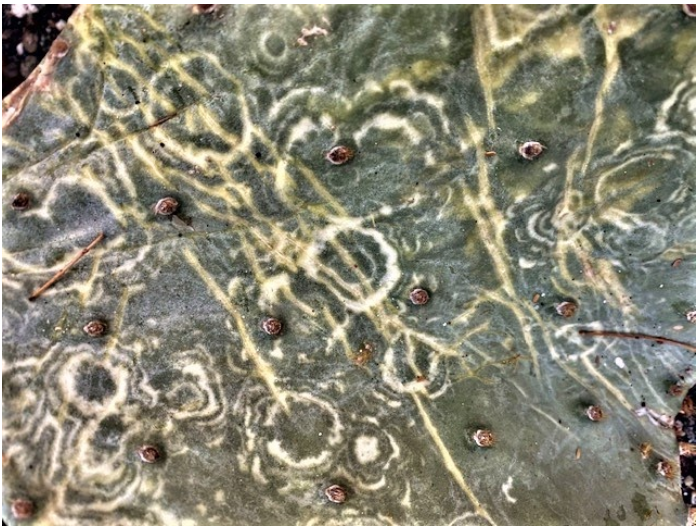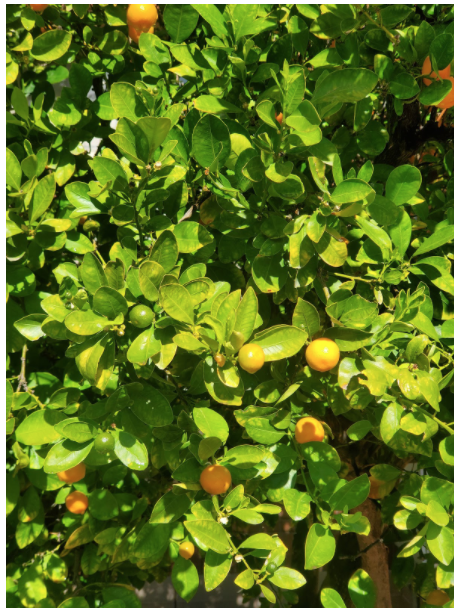
Sydney Streightiff is a second year masters student in Oboe Performance at the University of Arizona. Originally from San Diego, California she was raised amongst a variety of cultures and is always looking for ways to collaborate with other arts disciplines. While completing her bachelor’s degree at the University of California, Irvine she created a program to promote mental health in the fine arts college by connecting students through art in order to show simple ways they could take care of themselves during the year. In the past couple of years she has become increasingly interested in projects that incorporate arts and social change. She was drawn to the encounters project as a way to increase her understanding of ethnography and applied intercultural arts research. She is interested in increasing wellness during the COVID-19 pandemic and is excited about engaging with fellow researchers around the world.

“Tea at Josephine’s”
Rebecca Thompson’s large scale, site-specific works incorporate natural materials and eco-friendly construction. Thompson spent her childhood near Washington D.C., which influenced the monumental scale of her work. She completed her MFA at Cornell University in 2003 and is currently a PhD candidate at the University of Arizona, Applied Intercultural Art Research with a minor in Journalism. Thompson’s interests include community engagement, experiential learning, and creating outdoor contemplative spaces. Thompson aims to incorporate the techniques of literary journalism and ethnography into her writing highlighting the importance of creativity with health and wellbeing. In addition to her monumental artwork located at universities and public sites as well as in private collections across the nation, Thompson has published health-related stories – both in print and online. rebeccathompsonsculpture.com

Dr. Jennie Gubner is a socially engaged scholar, violinist, and visual ethnographer with a PhD from the UCLA Department of Ethnomusicology. She works as an Assistant Professor of Music and Chair of a Graduate Interdisciplinary Program in Applied Intercultural Arts Research at the University of Arizona. Her research interests include Latin American popular music with a focus on intergenerational tango music scenes in Buenos Aires, creative and applied approaches to the study of music and dementia and aging, ethnomusicological filmmaking, and the use of the arts and arts-based research methods to promote intercultural community health and wellness. In 2019, she became an Atlantic Fellow for Equity in Brain Health at the Global Brain Health Institute in San Francisco. As a violinist she loves playing folk and popular music styles from North and South America. She has been involved as an instructor and researcher with many of the other faculty members of the Encounters team over the last few years in designing and teaching a summer graduate program on arts-based ethnography in Lesvos, Greece. www.jenniegubner.com
Introduction to our Awe walk Project
Exploring Awe-Walk Encounters through Applied Arts-Based Research
This project was inspired by the recent media frenzy surrounding the latest published research of Dr. Virginia Sturm, one of Jennie Gubner’s mentors from the fellowship she completed last year at the Global Brain Health Institute at UCSF in San Francisco. Dr. Sturm is an Associate Professor in the Departments of Neurology and Psychiatry and the director of the Clinical Affective Neuroscience (CAN) Laboratory at the UCSF Memory and Aging Center. Dr. Sturm’s latest research seeks to promote healthy aging by encouraging older adults to seek out the emotion of awe–an emotion comparable to childlike wonder–on weekly short 15 minute walks. Sturm found that going on walks with the specific intention of looking for things that inspired awe increased happiness and wellness over time (more happiness than her control group who she sent to go on regular weekly walks without seeking awe). This study, designed as a way to promote affordable strategies for healthy aging, made a significant splash in the media and was covered in articles published by major news outlets like the New York Times, and The Guardian. Subsequently, Dr. Sturm noticed that #awewalks started appearing as a new hashtag as people were eager to share their experiences of awe with one another.
As the director of the Applied Intercultural Arts Research PhD program at the University of Arizona, Jennie started wondering how applied, ethnographic and arts-based research methods might be able to enhance the visibility of the work of her UCSF mentor. She noticed that Sturm’s study, designed as a randomized controlled trial that focused on outcomes, had little room for sharing the sensory experiences of the awe-walks themselves. If people are inspired by the idea of awe walks, perhaps there could be ways to further facilitate discussions about encouraging awe walks by drawing on the creative documentation of the walks themselves. If people worldwide have started sharing awe walks on instagram, perhaps there could be ways to encourage interactive creative sharing experiences around awe walking across the age span. Thinking about the collective fatigue experienced by students, faculty, and staff in university settings after nearly 2 semesters of almost all online learning, she started wondering how she might bring awe walks into the context of the university setting and how connecting through awe walk experiences on social media might offer her university community a wellness-inducing form of social connection that didn’t rely on Zoom meetings.
Launching from this initial impetus, the Tucson team will invite students, staff, and faculty to participate in weekly awe walks framing each week with a new theme. We will be using #uaawewalks on Instagram, asking those who participate to title submissions with the weekly theme to encourage campus wide connections and interactions. The team is currently exploring potential themes of texture, light, color, and form. In preparation for inviting others, the team will spend December experimenting and documenting our own experiences, reactions, and observations. We are also interested in expanding our experiences to include the creation of art inspired by said walks. The goal of our research is to track how awe walks impact wellness on the University of Arizona campus and combat zoom fatigue over time. Attached are a few images from our walks this week.



I really like the original idea as well as your version involving the campus community. It is based on the mindset of “acknowledging the importance” and I think it’s incredibly important for someone’s emotional state. Beyond the useful findings, I believe this method will always be a tool for participants, even after the program is over. It’s one of the things I try to do in my life, but it’s not always easy. Paying attention to small things that initially seem insignificant may not happen automatically, but it takes conscious effort. Doing so spontaneously in any case is a technique that needs to be practiced.
For me, trying to find interesting things to admire makes me feel, “emotionally alert”.
This project reminds me another use of walks: as an ethnographic tool (the “go-along” method). It’s something I’ve learned quite recently during my thesis research. Both approaches consider walking to be more than just a process of moving from one place to another, and I just find this really interesting.
The “go-along method” is a hybrid between participant observation and interviewing. It’s a qualitative “ethnographic research tool that brings to the foreground some of the transcendent and reflexive aspects of lived experience as grounded in place”. During the “go-alongs”, fieldworkers “accompany individual informants on their ‘natural’ outings.” Asking questions, listening, observing and watching them interacting with their environment they can gather data on how individuals understand and engage their physical and social surroundings in daily life. This technique presents certain benefits when exploring the role of the place and the significance of the environment in the experience of daily life.
Kusenbach, M. (2003) “Street Phenomenology: The Go-Along as Ethnographic Research Tool”, Ethnography, Vol 4(3): 455–485, DOI: 10.1177/146613810343007
Gefsi.